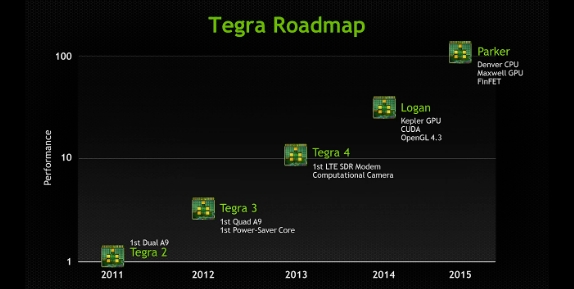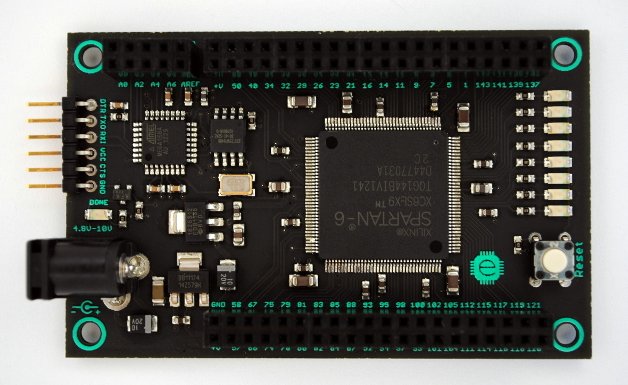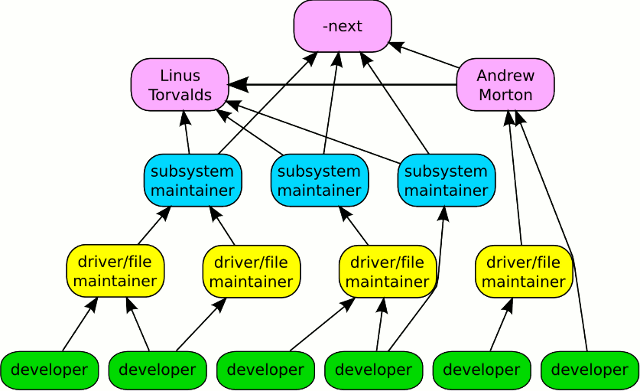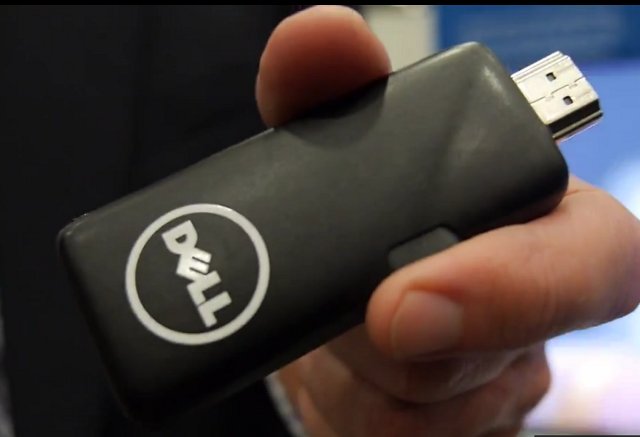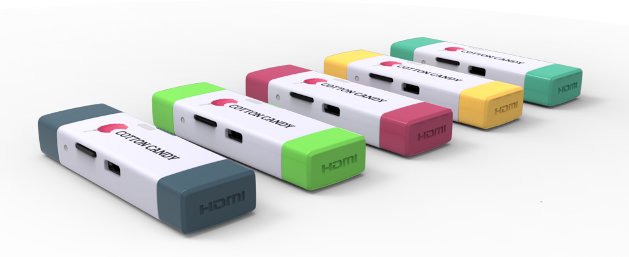Nvidia has given an update about the roadmap for its Tegra processor at the GPU Technology Conference in San Jose, California. Tegra 4 will still be followed by Logan (Tegra 5) as planned with a Kepler GPU and support for CUDA and OpenGL 4.3, but “Stark” has been replaced by “Parker” (Tegra 6) which will be the first 64-Bit Tegra processor based on Denver CPU, Maxwell GPU and make use of Finfet transistors. Logan will be available in 2014, and Parker should be available in 2015 with 100 times more performance than Tegra 2. With this kind of performance, the separation line between desktop and mobile processors will be gone. Nvidia also unveiled Kayla (“Logan’s girlfriend”), a development platform for CUDA and OpenGL based on Tegra 3 quad-core ARM processor and a Kepler GPU connected via a PCI express slot. Jen-Hsun Huang (above) showcased Kayla performance by running real-time ray […]
$19 RFDuino is a Coin-sized Bluetooth Arduino-compatible Board
RFDuino is a tiny board, about the size of a coin, powered by Nordic nRF51822 Cortex M0 SoC including bluetooth 4.0 LE support, and software compatible with Arduino UNO and DUE board, so you can just use Arduino sketches with the board. Bluetooth allows it to communicate with your smartphone (iPhone for now, but Android support is coming) to control motors & relays, monitor sensors, turn LEDs on/off, and more. Key features of RFDuino board: MCU – Nordic nRF51822 Cortex M0 @ 16 MHz Memory – 16 KB on-chip SRAM Storage – 256 KB on-chip Flash Connectivity – Bluetooth 4.0 Low Energy built in MCU GPIO – 7 pin software configurable as digital IO, analog ADC, SPI, I2C, UART and PWM. The company currently offers several stackable shields for RFDuino including battery shields (1x AAA, 2x AAA, and CR2032 coin battery), a servo shield, a USB shield, a prototype shield […]
Ittiam HEVC Decoder To Provide H.265 Video Decoding for Existing ARM Cortex-A Devices
H.264 is now the favorite codec for many applications, and all ARM SoC providing multimedia capabilities support it. However, a new codec called H.265 (aka HEVC) is coming with twice the compression ratio with the same quality saving a lot of money for those who have to pay for the bandwidth. The transition between video codecs is normally a slow process, but as it happens you may wonder if you’ll be able to play H.265 videos on your existing ARM Cortex A9/A15 devices which do not support H.265 hardware video decoding. The answer appears to be “Yes You Can!”, as Ittiam Systems announced an HEVC decoder specifically designed for ARM Cortex A processors. More specifically their software decoder will support: ARMv7 Cores with NEON – Cortex A8, Cortex A5, Cortex A9, Cortex A15, Cortex A7 and the multi core variants Qualcomm Snapdragon APQ8064/MPQ8064 , MSM8960 Ittiam HEVC decoder mainly targets devices such […]
Latest Tronsmart Prometheus Firmware Features Android 4.2 and XBMC with Video Hardware Decoding
Last month I reviewed Tronsmart Prometheus, and I was pretty satisfied with the device except some bugs. There’s no a firmware update that should fix AC3/DTS static noise issues in this set-top box. Prometheus also becomes one of the first set-top boxes to support the latest Android Jelly Bean 4.2, and comes with an XBMC version supporting hardware decode using XBMC user interface, and not an external media player such as DicePlayer or MX Player. You can download the firmware ( 2013-3-08(4.2_root_ac3_dts_market_xbmc).zip), and install it using the upgrade procedure on Tronsmart website. I’m on the road, so I can’t try the firmware myself right now (which also explains why I haven’t posted in the last few days), but Geekuying has upload a short video showing XBMC with video hardware acceleration on the device. (Previous firmware in Android 4.1.2). Jean-Luc Aufranc (CNXSoft)Jean-Luc started CNX Software in 2010 as a part-time endeavor, […]
The Mojo – $65 FPGA Development Board Powered By Xilinx Spartan 6
Embedded Micro has started a kickstarter campaign to fund an FPGA board called “the Mojo”, “designed to be user friendly and a great introduction into digital design”. The board is powered by a Xilinx Spartan 6 FPGA that comes with over 9,000 logic cells, and will allow you to design digital circuits composed of a bunch of logic and, or, nor, etc… gates connected together to perform a specific task. Here are the features of “The Mojo”: Spartan 6 XC6SLX9 FPGA – 9,152 logic cells for your largest designs 84 general purpose digital IO pins (3.3V logic level) 8 analog inputs 8 user controlled LEDs A USB connection (new revision) to configure the FPGA and send receive data from your design On board voltage regulation (4.5V – 12V input, 3.3V and 1.2V outputs) 8 MHz on-board clock (can be multiplied internally by the FPGA) A reset button to be used in your designs […]
Linaro Connect HK Greg Kroah-Hartman Keynote: “I Don’t Want Your Code!”
If you are a developer interested in getting your code into mainline, Greg KH keynote at Linaro Connect 2013 Hong Kong is probably worth a watch. In this presentation entitled “I Don’t Want Your Code! Linux Kernel Maintainers, why are they so grumpy?”, he first describes the large amount of patches they receive (7.28 patches per hour for kernel 3.8.0), gives some statistic about developers and companies involved with the kernel (about 20% is done by individuals), tells the audience they should submit the kernel code during SoC emulation/simulation stage, so that it’s accepted and ready to use when customers get the silicons (like Intel does), and quotes Intel and IBM executives saying “Working upstream saves time and money”. He then moves on what he does not want to see (and gets a lot): patch series with missing patches, email signature saying it’s confidential (since Linux development is done publicly, […]
Dell Project Ophelia Rockchip RK3066 mini PC / Thin Client and PocketCloud Suite
As announced at CES 2013, Dell will be the first multinational company to enter the Android mini PC with Project Ophelia, a mini PC powered by Rockchip RK3066 with 1 GB RAM and 8 GB Flash, which would just be an American copy of Chinese products without support for MHL, and PocketCloud, a software suite to access your computers’ desktop remotely, create your own private cloud, and manage your devices remotely. The specifications have not been disclosed, but I could gather some specs mainly from CNET: SoC- Rockchip RK3066 Dual Core Cortex A9 @ 1.6Ghz System Memory – 1GB RAM Storage – 8GB Flash + micro SD Connectivity: Bluetooth Wi-Fi 802.11 b/g/n (with push to connect button) Video Output – HDMI / MHL USB – microUSB Dimensions – 8.89cm x 3.81cm You can either power the device via MHL if you have a compatible television, or via USB like most […]
FXI Technologies Cotton Candy HDMI Stick To Fully Support Both Android and Ubuntu
FXI Technologies was the first company to ever show an HDMI TV dongle when they unveiled the Cotton Candy in November 2011. Since then, many Chinese companies started to provide similar products at lower cost, and the company further improved the Cotton Candy, which is still powered by Exynos 4210 (dual core Cortex A9), by making it even smaller, and getting rid of the internal flash in the process. As a memory refresher, here are the specifications of the Cotton Candy: SoC – Samsung Exynos 4210 dual core Cortex A9 + Mali-400MP4 System Memory – 1GB DRAM Storage – No flash, up to 64GB microSD Video Output – HDMI Connectibity Wifi 802.11b/g/n Bluetooth 2.1 + EDR USB – USB 2.0 male connector for power and connection to devices that supports USB mass storage + microUSB Video Codecs- 480p/720p/1080p Decode of MPEG4-SP/H.263/H.264 AVC/MPEG-2/VC1 Audio Codecs – MP3, AAC, AAC+, Real Audio […]

